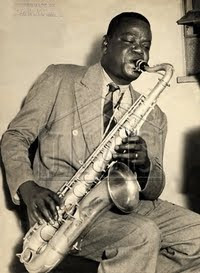Choro da Saudade - A Popular Classic
 The Paraguayan composer and guitar virtuoso, Augustin Barrios Mangoré (1885-1944), is considered by many to be one of the greatist composers of 20th Century Latin America, although his works (- more than 300 compositions in various genres) only gained world famous recognition decades after his passing away. Thanks to the highly estimated English guitarist, John Williams, the guitar music compositions of Barrios finally were saved from oblivion and a selection of these were recorded by Williams in the mid-1970s. The record was issued by CBS and became a huge success with the public and established Barrios' name a place among the composers of the canon of classical guitar music repertoire. One of the compositions by Barrios recorded by John Williams was 'Choro da Saudade'. I found a video performance dated 1976 featuring Williams playing 'Choro da Saudade'
The Paraguayan composer and guitar virtuoso, Augustin Barrios Mangoré (1885-1944), is considered by many to be one of the greatist composers of 20th Century Latin America, although his works (- more than 300 compositions in various genres) only gained world famous recognition decades after his passing away. Thanks to the highly estimated English guitarist, John Williams, the guitar music compositions of Barrios finally were saved from oblivion and a selection of these were recorded by Williams in the mid-1970s. The record was issued by CBS and became a huge success with the public and established Barrios' name a place among the composers of the canon of classical guitar music repertoire. One of the compositions by Barrios recorded by John Williams was 'Choro da Saudade'. I found a video performance dated 1976 featuring Williams playing 'Choro da Saudade'The composition is a choro, of course, the structure of the music has the form of a rondo - A, B, A, C, B, A. Note the main theme, A, keeps coming back to haunt, as in the feelings of yearning or lament. “Saudade” is a hard word to translate into English, it refers to nostalgia, or feelings of yearning, such as in homesickness - the inspiration expressed in the A-part. The first time the work was featured in a concert programme of Barrios was dated November 1929. The manuscript was written out by Barrios in 1929, dedicated to Americo Camargo, the son of a good friend who had died tragicly young. - The composition is notorious among guitarists for it’s long left hand stretches, many finding impossible to play. It may be that this piece is the first example of the hinge barre being used in classical guitar music. This is where the left hand barre stretches across the strings, but instead of being across fret one, the tip of the finger reaches to fret two. Thus enabling the hand to reach to higher positions. (info excerpted from article by Mark Antony at Guitar World )
Since John Williams recorded the piece in 1976 'Choro da Saudade' has become a challenging composition of the classical standard guitar book, as mentioned. You'll find various examples uploaded at YouTube of performances of the piece, some of them differ in interpretation of tempo and execution - not all classical trained guitarists have the same conception of the music. Anyway, to end this small contribution about this famous guitar composition I'll insert a video performance by a Brasilian artist - João Rabello, son of Paulinho da Viola, grandson of Cesar Faria and his uncle being the late Raphael Rabello. Learn more about João Rabello at his official web (- in Portuguese and English), click here
From a TV-program João Rabello performs "Choro da Saudade" - enjoy!
Jo



4 Comments:
Thanks for this interesting contribution about a tune, that sounds almostclassical. For me all guitar pieces are hard to play, so this one doesn't belong to the most difficult pieces to me.
Keep swinging
Hans
An interesting version is the one by Chet Atkins on his "Solo Flights"-album. He made it sound like a "piece of cake", you have to be good to do that!
KJ
Regarding recordings of 'Choro da Saudade' my own favorite of the composition still is the one by Turibio Santos on the 1977 LP-issue of Choros do Brasil. But I'm always open to listening to new interpretations of this famous composition. Anyway, I didn't know that Atkins recorded the piece, but why not? One of the uploade video performances at YouTube designate Barrios' music and guitar contributions as 'Rock'N'Roll of the rain-forrest' - well, no comments ...!
Jo
Thanks for the article. One correction, John Williams is Australian.
Post a Comment
<< Home